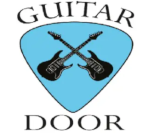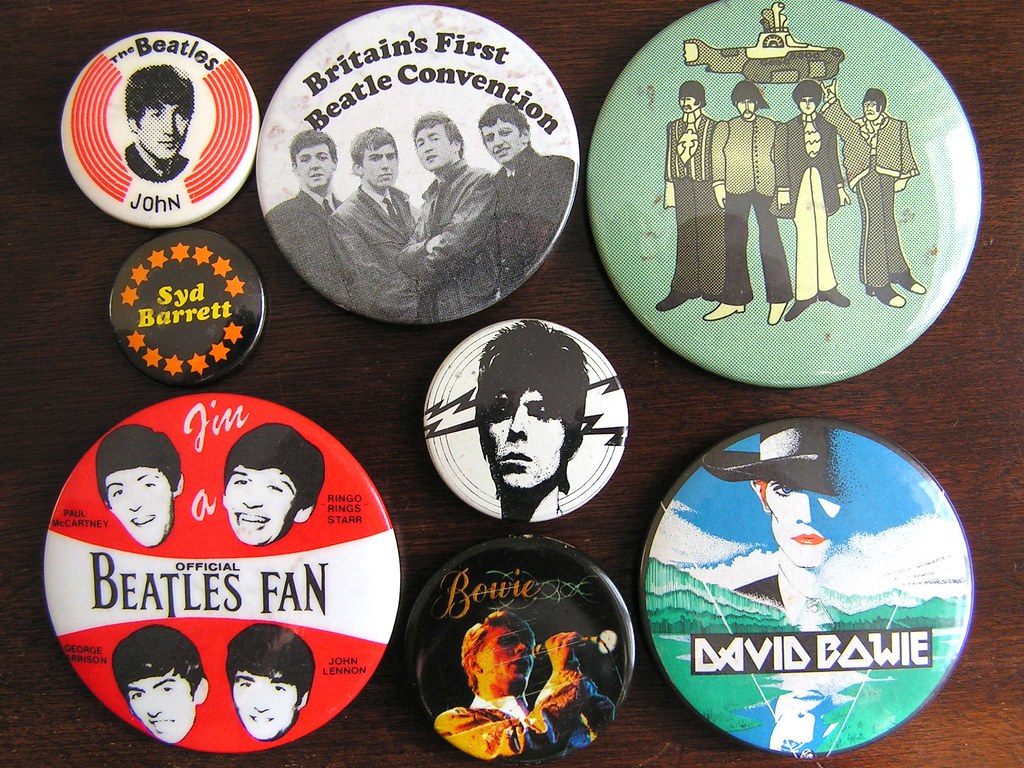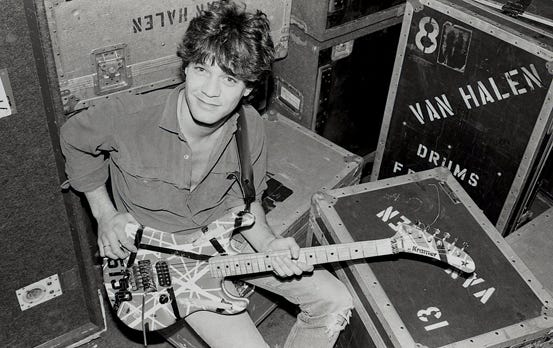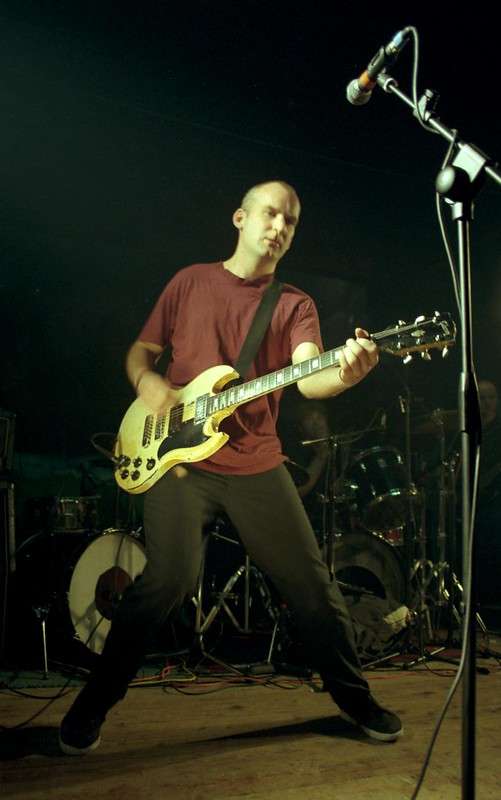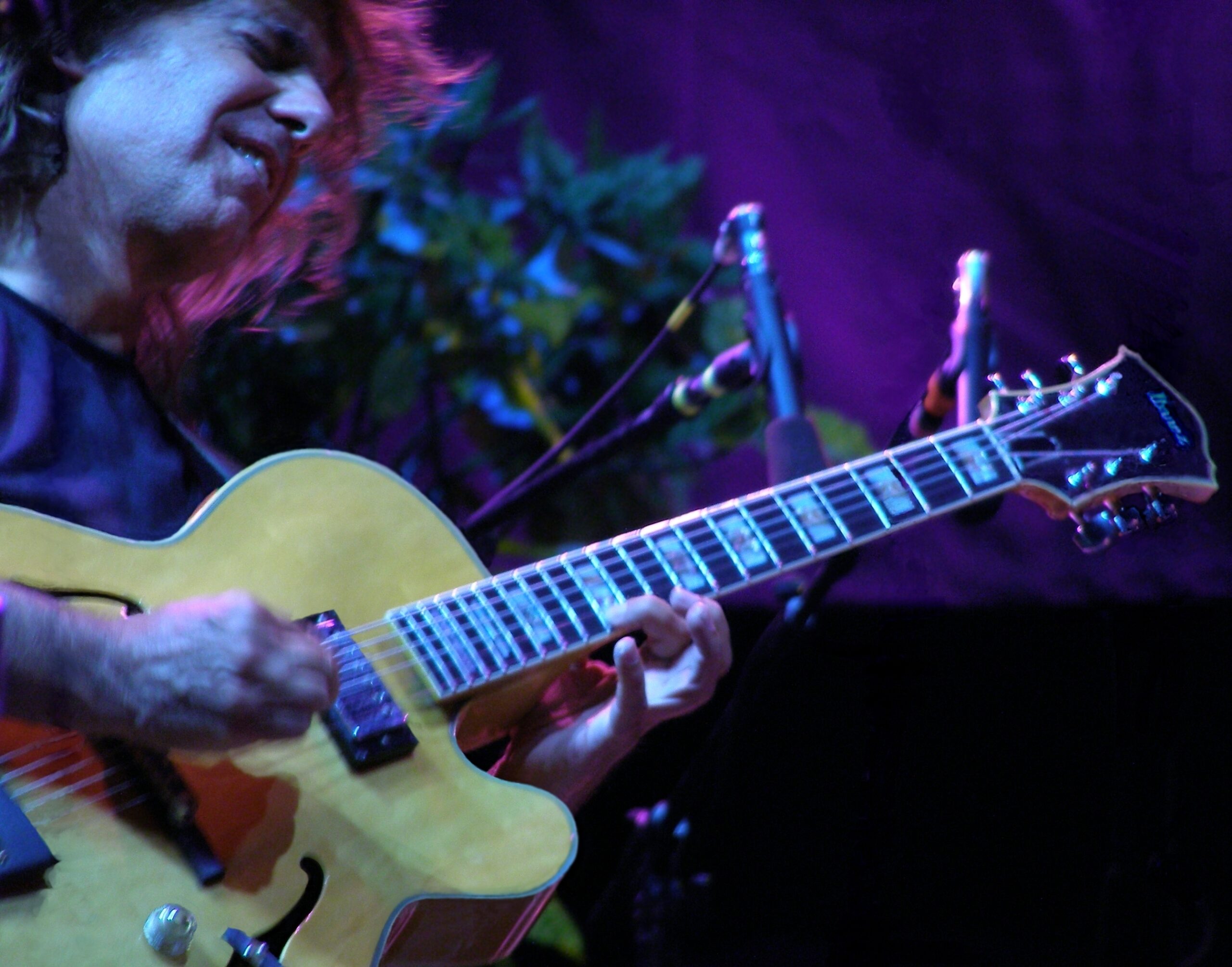New Wave guitar music emerged in the late 1970s and early 1980s as a subgenre of punk rock and post-punk. It is characterized by its use of synthesizers, electronic drums, and angular guitar riffs. Some of the most notable New Wave guitar bands include The Cars, Talking Heads, and Blondie. The genre was known for its danceable beats and catchy hooks, and it had a significant impact on the music industry. Today, New Wave guitar music continues to influence contemporary artists and remains a beloved genre among music enthusiasts.
As a nascent subgenre of punk rock and post-punk in the late 1970s and early 1980s, New Wave guitar music marked a distinct era in the history of music. Drawing from a rich sonic palette, it integrated synthesizers and electronic drums alongside the traditional angular guitar riffs, crafting a soundscape that was both innovative and hauntingly familiar. High-profile bands such as The Cars, Talking Heads, and Blondie were synonymous with this genre, pioneering a style that merged profound emotional resonance with irresistible danceable beats and catchy hooks. Beyond their influential sound, these bands also made substantial contributions to the broader New Wave landscape, shaping it into the beloved genre that it is today. This article delves into the challenging, often blurred paths these bands ventured, showcasing their intricate journeys through the spectrum of New Wave. Noteworthy mentions besides the household names include Joy Division, PIL and Marianne Faithfull, all of whom added their unique splashes of creativity to the genre. However, the ‘New Wave’ label has its fair share of controversies. Critics argue that it often unnecessarily bundles together vastly different bands under a singular umbrella term. This issue, nonetheless, should not detract us from the main focus – the visceral power of the music itself. Despite these debates, New Wave guitar music’s undisputed quality and enduring legacy continue to reverberate in the music industry, inspiring both contemporary musicians and discerning audiences alike.
The BEGINNINGS of the “The new wave guitar sound?”
The complexity of musical generational labels can often create a maze of misconceptions and inaccuracies. Nonetheless, they serve as useful guides to tracing the evolution of distinct sounds over time. Emerging in the late 1970s as a vibrant subgenre of punk rock and post-punk, New Wave embraced a fusion of rock music with avant-garde aesthetics. An exploration of the sonic palette of synthesizers and electronic drum machines inspired novel rhythmic possibilities. Bands such as The Cars and Joy Division, with their intricate angular guitar riffs, played pivotal roles in defining the burgeoning movement. Numerous bands that emerged in the wake of Punk’s ascendance came to be loosely labeled as “New Wave,” even with their diverse artistic identities. The New Wave label has been a subject of criticism and debate, grouping together disparate bands under one umbrella. Yet, beneath these arguments lies an unwavering musical legacy inextricably entwined with the early 1980s. The New Wave guitar sound redefined the boundaries of music, paving the way for bands like PIL and artists like Marianne Faithfull. They took up the baton and pushed further into the uncharted territories of music. Each has made significant contributions, leaving an enduring footprint on the musical landscape, reinforcing that amidst all debates over labels, the quality and longevity of the music should remain prioritized.
Some incredible Rock bands instigated a true musical revolution during the emergence of the New Wave genre in the late 1970s. These pioneers stepped forth from the shadows of punk rock and post-punk, making great strides in their music by integrating unconventional elements. The term “Synth,” once dreaded in the Rock community, progressively found a welcome seat in the panorama of sounds, embraced notably by heavyweights such as Van Halen and RUSH. Synthesizers, once condemned to the sidelines, became an invaluable asset, not replacing but enhancing the musicianship, proving that music could extend beyond the realm of traditional instruments such as the guitar and drums. The New Wave genre gave bands like The Cars, Joy Division, and Public Image Limited the freedom to experiment, resulting in a stimulating blend of synth-based rock music. Criticisms and debates swirled around the ‘New Wave’ label, creating controversy and lumping distinctly individual bands together. Yet amid these categorizations, it was the music’s quality, resonance, and indelible legacy that skated through in the minds of listeners, underscoring the prime importance of content over labels.
The unprecedented emergence of “Give the drummer some”, essentially a moniker for a drum machine, perfectly encapsulates the seminal evolution of New Wave guitar music during the 1970s. The metamorphosis from a subgenre of punk rock to a standalone genre characterized by the innovative use of synthesizers, captivating electronic drums, and edgy guitar riffs arguably defined a golden era in popular music. A hundred-dollar bill awaits someone who can unearth an influential document showcasing a “Drum Machine Solo” captured live, embodying a poignant crystallization of inspiration. This cultivates an often-debated impression that the guitar got somewhat sidelined during this epoch, which is, in fact, a sliding scale, highly contingent on one’s musical preferences. Some of the most admirable feats of guitar prowess ever witnessed graced this era, thus repelling such an oversimplified view – a stark reminder that the ‘New Wave’ concept had a myriad of remarkable acts, such as The Cars, Talking Heads, and Blondie. Crucially, despite the extensive deliberations and potential mislabeling associated with the ‘New Wave’ moniker consequently clubbing together disparate bands, the fundamental and unwavering focus should invariably remain the quintessential quality of the music and its enduring legacy. The likes of Joy Division, PIL, Marianne Faithfull, and The Cars have inscribed their indelible marks on this genre, proving that an all-encompassing label shouldn’t detract from the striking individual contributions these bands made to New Wave music.
New Wave Guitar From The Cars.
The Cars were an American rock band formed in Boston in 1976. Emerging from the new wave scene in the late 1970s, it consisted of Elliot Easton (lead guitar), Greg Hawkes (keyboards), Ric Ocasek (rhythm guitar), Benjamin Orr (bass guitar), and David Robinson (drums). Ocasek and Orr shared lead vocals, and Ocasek was the band’s principal songwriter.
Elliot and Rick crafted not only the song into something radio and fans would quickly grow to love then and now, but the guitar breaks, and in reality, the foundation for a larger portion of their work has not been diminished by time. Elements of Punk, Rockabilly, Art Rock, and pop were exactingly placed to create one of the most unique and identifiable signature sounds of any band ever with their new wave guitar sounds. I’m hard-pressed to find many people who still love the Cars from their debut album
“ The Cars” was released in June 1978, reaching “Just What I Needed” was released as the debut single from the album, followed by “My Best Friend’s Girl” and “Good Times Roll”, all three charting on the Billboard Hot 100. The album featured multiple album tracks that received substantial airplay, such as “You’re All I’ve Got Tonight”, “Bye Bye Love”, and “Moving in Stereo”.
Released in June 1979, Candy-O, the band’s second album, was an even bigger hit peaking at No. 3 on the Billboard 200 album chart,
Cars, Guitars, and Elliot Easton
The band continued to create spectacular sounds right through the Death of Rick Ocasek.
The Cars: Rock & Roll Hall of Fame video presentation, 2018
Joy Division
An integral part of the new wave evolution was Joy Division, an English band that originated in Salford in 1976. Comprising of talented members like vocalist Ian Curtis, Bernard “Barney” Sumner who handled new wave guitar and keyboard duties, bassist Peter Hook, and drummer Stephen Morris, they brought a distinctive edge to the genre. Inspired by The Sex Pistols’ electrifying performance in Manchester, where they all happened to be audience members, they later became principal drivers in the new wave movement. Amidst criticisms and debates around the ‘New Wave’ label grouping vastly different bands together, the overarching quality and lasting legacy of the sound they created reassured their prominence. Despite these labels, the sublime fusion of synthesizers, electronic drums, and particularly Sumner’s edgy guitar riffs in Joy Division’s music, provided a unique and compelling contribution to the genre’s evolution.
At the inception of their musical journey, the band fashioned a risky, almost defiant persona — raw, dark, and brooding. They even chose a name that sparked controversy due to its contentious origin in Nazi abuse, inviting an outroar of flack. They did not support the atrocities committed by the Nazis, far from it, instead, they sought to reclaim the term, breathing into it a positive essence, thereby distancing it from its horrific roots. An equivalent historical act is the appropriation of the “Swastika” by Hitler, a symbol that ironically predates Nazi Germany and comes from Native American culture. It was merely pivoted into the worst configuration. As we delve further into the makings of New Wave guitar music, the tumultuous journey of these bands becomes UNDENIABLY evident. From the angular guitar riffs of The Cars to the new-fangled electronics that PIL infused into their punk roots, each ensemble added another striation to the evolving genre. Even as debates loom around the ‘New Wave’ identifier, often causing discord about its aptness for these diverse bands, the article advocates for a more music-centric discourse. Despite the diversity, or perhaps because of it, New Wave music resonates with a dynamic richness that has permeated the decades, lending to it a timeless appeal.
From my firsthand experience in an Ohio museum, I’ve observed the significant influence of foundational designs like the original Hopewell Micah on New Wave guitar music. This genre’s evolution, seen in the late 1970s, was influenced by bands such as The Cars and Blondie zealously experimenting with their art. The thrive for recontextualizing elements, analogous to how these bands repositioned the so-called negativity associated with their names, showcases a distinct aspect of this genre. Their music comprises angular guitar riffs blended intriguingly with synthesizers and electronic drums, counteracting the criticism that the ‘New Wave’ label lumps eclectic bands together. Their contributions have unquestionably shaped the genre, foregrounding the enduring quality and legacy of New Wave music over debates and labels.
Joy Division – Shadowplay (40th Anniversary Remaster) 1978 Granada TV, Live
Musically the band was stripped down and new wave guitar innovator Bernard Sumner was playing Heavy Handed Distorted and Powerful Chords. At times a bit heavier than the Punk Element and there were most likely unknown flashes of Link Wray. They were another group evolving in the Public eye. You can see the beginnings of the search for a melodic sense in his solos. They were not hiding in the garage practicing for years, they were out there fearlessly working on their craft on television.

Their self-released 1978 debut EP” An Ideal for Living” drew the attention of the Manchester television personality and when announcement was made by Tony Wilson on his radio show the world started falling in love with joy division. Wilson had signed them to his independent label Factory Records. Their debut album Unknown Pleasures, recorded with producer Martin Hannett, was released in 1979.
Joy Division’s second and final album, Closer, was released two months later; it and the single “Love Will Tear Us Apart” became their highest charting releases. With its pillar new wave guitar sound and bass riff.
The remaining members regrouped under the name” New Order”. They were successful throughout the next decade, blending post-punk with electronic and dance music influences.
The Heartbreaking Demise of Ian Curtis: A Pivot in Joy Division’s New Wave Narrative
The late 1970s gave way to the rise of the illustrious New Wave music genre, a remarkable offshoot of punk rock and post-punk that was morphed into a unique soundscape by bands like The Cars, Talking Heads, and the iconic Blondie. These lauded bands infused catchy, angular guitar riffs with lashing electronic elements, creating a fresh, eclectic sound that took the music scene by storm. Supreme talents, including Depeche Mode, Trans-X, Yazoo, O.M.D., Berlin, Kraftwerk, Human League, New Order, Visage, and countless others, loudly announced their arrival on this stage. However, amidst this technological revolution in music, the defining characteristic of New Wave – the charismatic guitar – seemed to have evaporated in certain instances, leaving an indelible hole in the genre’s soul. Anchored by the likes of The Cars, Joy Division, PIL, and Marianne Faithfull, the evolution of this genre sparked discussions and debates around the labelling of ‘New Wave’, which critics argued tended to paint very different bands with the same broad brush. However, the music’s undeniable quality and enduring impact should, the author contends, take precedence over any such taxonomical classifications.
Public Image Ltd
“PILL” as they were also known as a very different band that one can look to as in the same song being deconstructionist, Clever, and reaching for something more.
Formed by singer John Lydon, guitarist Keith Levene, bassist Jah Wobble, and drummer Jim Walker in 1978. The group’s personnel has changed frequently over the years; Lydon has been the sole constant member.
Following his departure from the Sex Pistols in January 1978, Lydon sought a more experimental “anti-rock” project and formed PiL. That year PiL released their debut “First Issue” in 1978, creating an abrasive, bass-heavy sound that drew on dub, noise, progressive rock, and disco.
PiL’s second album Metal Box in 1979 pushed their sound further into the avant-garde and is often regarded as one of the most important albums of the post-punk era.
PIL – Public Image
Guitarist Keith Levene had many approaches to the Guitar in whichever context he was placed. One can hear his work in the song “ Public Image” and hear sounds most likely influential to Billy Duffy of The Cult adopted later on. Levene in time began to drop out of the guitar playing in favor of synthesizer, picking up a new technique although owing to debt to Allen Ravenstine of Pere Ubu. The 1981’s “Flowers of Romance” is a personal favorite. In a conversation a couple of decades ago a friend and I were talking about the albums to put on when the Party was getting to that point you wanted people to leave without telling them outright. I mentioned Captain Beefheart’s “Trout Mask Replica”, He countered by playing me “Flowers of Romance”. We came to the agreement that if people did stay after the first 7 minutes, then those were the kind of people we wanted to party with.
Public Image Ltd.- The Flowers Of Romance (Top Of The Pops) 1981
Public Image Ltd. – Anarchy Movie 1985 – Full Show
Regarded as titans in the history of New Wave guitar music, it’s crucial to delve into the distinct identities of bands like Elvis Costello, The Pretenders, and Talking Heads. Admittedly, Elvis Costello’s artistry significantly shaped the late 70’s soundscape. Meanwhile, The Pretenders’ profound influence as an outstanding Rock N Roll ensemble unjustly forced under the “New Wave” classification is significant. And the Talking Heads remains untamed, establishing a unique sonic realm, far removed from their contemporaries. Despite the mix-up and controversies surrounding the genre classifications, the brilliance of their music undeniably marks an enduring legacy worth focusing on.
The trouble with categorizing New Wave’s diverse array of sounds and influences into a single definition unveils itself when we look at bands like “Tears For Fears” and “Devo”. New Wave, born from the gritty chaos of punk rock and post-punk in the late 1970s, was quintessentially shaped by pioneering bands such as The Cars, Talking Heads, and Blondie who unabashedly incorporated synthesizers, electronic drums, and angular guitar riffs into their music. Their influence, and that of other iconic bands like Joy Division, PIL, and even Marianne Faithfull, each contributed uniquely to the multifaceted landscape of New Wave. However, this broad spectrum of music has caused debates around the legitimacy of the ‘New Wave’ label, with criticisms arguing it wrongly groups highly distinctive bands together. Contrarily, we should view this variety not as confusion, but rather as testament to the genre’s distinct quality and lasting legacy – an enduring tribute to the creative experimentation it upheld.
In wrapping up this exploration of New Wave’s evolution, I offer a poignant example highlighting the genre’s rich musical stratums. Let’s appreciate the artistry of a unique album: Pink Moon by Nick Drake. Released in the epoch also marked by notable bands like The Cars, Talking Heads, and Blondie, this album grew under the broad ‘New Wave’ umbrella. Yet, it stands out for its extraordinary synergy between synthesizers and the traditional guitar. This musical interplay, both angular and melodic, echoes the post-punk subculture while reflecting its own sonic identity. It represents a milestone in the genre, transcending the confines of its period, proof of the enduring quality and valuable legacy intrinsic to good music, regardless of the diversity in labels.
Marianne Faithfull
“Broken English” released in 1971 is a work for the ages.
As Journalist Tom Lanham described it “ The daughter of an Austrian baroness, this swinging London socialite was first discovered by Rolling Stones Svengali Andrew Loog Oldham, who provided her first Mick Jagger/Keith Richards-penned hit “As Tears Go By” in 1964.
After flirtations with film, drugs, and even Jagger himself, Faithfull disappeared for a decade, reinventing herself as a smoky-throated chanteuse on 1979’s New Wave gem, Broken English.
It’s a mix of punk and rock and balladry with the generous amount so synthesizers from Steve Winwood, but it’s Faithfull’s smoky, cracked voice singing vulnerable songs about sex and heartbreak that led to a Grammy nomination and critical acclaim. “
Marianne Faithfull Broken English
Marianne Faithfull – Broken English Short Film by Derek Jarman
Derek Jarman’s Broken English is a short film that was released in 1979. The film is approximately 22 minutes long and features a cast of actors including Karl Johnson, Toyah Willcox, and Liz Smith. The film tells the story of a group of people who are living in a post-apocalyptic world where communication has broken down and English has become a fragmented language. The film is shot in black and white and features a haunting soundtrack composed by Simon Fisher Turner. Overall, Broken English is a powerful and thought-provoking film that explores themes of communication, isolation, and the fragility of language.
Guitarists Barry Reynolds, Joe Mavety, and Guy Humphries each found their own way to accentuate this music and remind the world of techno sound beginnings that The New Wave Guitar still had its place in popular music.
You may feel that these are odd choices of music to bring under the umbrella of “New Wave”. We are a guitar-based forum so that was a challenge in some ways. More Importantly, my last conclusion is no matter what you call any form of music..it’s all music.
Labels are helpful in certain circumstances and create confusion in others. Rather than ask “Is it Punk, Post Punk, New Wave, Pop or Rock?’ The question in music might be better served if one asks “Is it good Music or does it fall short?” “Is it Art or Image?” “Will it be important 20 years from now?”
Elvis Costello has been documented, The Pretenders were just a great Rock N Roll band that were lumped into “New Wave” The Talking Heads were an Island unto themselves.
Therein lies the problem of the New Wave as a broad stroke of definition. “Tears For Fears” and “Devo” in the same sentence are confounding.
In Closing, I want to draw attention to an artist and album that feel under the same Label but is a remarkably musical document that conveys the Synth and Guitar properly and is a musical high point regardless of the times.
